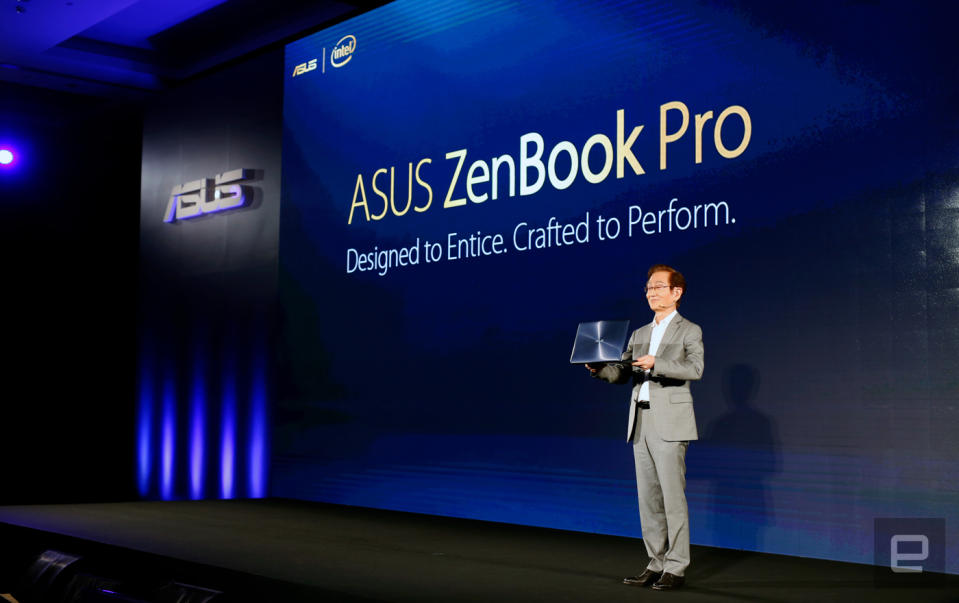Computex was a reminder that the age of the eSIM is upon us
While plastic cards will linger, expect the big changeover to happen soon.
Nestled inside your cellphone is a teensy sliver of plastic you almost certainly never think about. That's your SIM card -- the bit that basically stores your phone's identity and passes it along to whatever wireless carrier network you pay for. It's absolutely crucial to the way your phone operates, but wireless carriers and network companies have been plotting its demise for years. As far as they're all concerned, the future belongs to what's called an eSIM -- short for "embedded SIM" -- woven directly into the silicon fabric of a device's modem. Now, thanks to some crucial announcements made at Computex, we're getting a better sense of just how pervasive these things are going to be.
Before we go any further, you should know that eSIMs have been the works for years, mostly with smartphones, the Internet of Things and wearables in mind. Got a 3G Gear S2 or a Gear S3 Frontier on your wrist? They're among the first commercially available gadgets you could buy with an embedded SIM, allowing you to make calls and access data connections for apps without the need of a connected smartphone.
Anyway, Microsoft used its time in Taipei to push for "always connected" PCs: computers that, thanks to built-in eSIMs and ever-improving data connections, could function just as well out in a cornfield as it could in a coffee shop brimming with WiFi. Again, not a new concept, but one that's more feasible and effective than ever with innovative modems and the promise of true gigabit data connections.

Even now, the list of partners backing Microsoft in this effort is no joke: ASUS, Dell, HP, Huawei, Lenovo, VAIO and Xiaomi are all committed to building Windows machines with embedded SIMs for high-speed connections anywhere. For those not up on the PC market, that means the four biggest PC sellers in the world are down with the eSIM revolution, along with two very prominent Chinese players... and VAIO. Most of the companies on this list also make smartphones, so the importance of more capable, more ubiquitous connections is not lost on them. So, how is this going to work?
With a lot of help from chip makers, basically. Three of the companies listed above -- ASUS, HP and Lenovo -- have committed to releasing Windows machines running on Qualcomm's high-powered Snapdragon 835 chipset. (You might know it as the chip that helps the Galaxy S8 pull double duty as a smartphone and a desktop.) Snapdragons already come with radios for LTE data, but eSIM support means persistent connections and the possibility of buying your data in chunks straight from the Windows Store.
And then there's Intel. The California-based chip maker is working to ensure its future mobile modems are compatible with eSIMs. Without getting into unwieldy model numbers, Intel is already testing and validating eSIMs in one existing modem and one not yet released -- the latter is the more interesting, as it technically supports gigabit data speeds over LTE. As PC makers begin to adopt these modems into their devices, the eSIM revolution should help ensure that people can bring their notebooks and convertibles just about anywhere and still get stuff done.

Now, you don't need me to tell you Qualcomm is the dominant force in mobile chips -- there's probably some Qualcomm silicon in your pocket right now. Before Computex, the company had never said anything about eSIM support for the Snapdragon 835, the marquee mobile processor in its lineup. Going forward, it's hard to imagine a scenario where Qualcomm doesn't try squeezing an eSIM into its smartphone chips. Once that transition happens, good luck trying to find an Android phone without an eSIM.
Ditto for Intel, which, despite failing pretty hard at mobile over the years, has at least one huge company using its mobile modems. Certain flavors of the iPhone 7 use an Intel modem instead of the usual Qualcomm one, and rumors suggest Apple will soon lean even more heavily on Intel's networking prowess soon. I don't seriously expect Apple to reveal the iPhone 7s or iPhone 8 or whatever without a physical SIM slot -- the timing doesn't seem quite right -- but there's a real possibility we'll see eSIMs take hold in iPhones next year. If a company like Apple can ditch a classic interface like the headphone jack stick to the decision, what hope does the traditional SIM card have?
Long story short, eSIMs are already in our wearables, and they'll wind up in our phones and PCs before too long. Don't get too nostalgic just yet, though: While the big eSIM shift could begin as early as next year, don't forget that millions and millions of devices out there still have those tiny slivers of plastic inside them -- carriers will have to support them for years to come. Like it or not though, the changeover is coming, and the days of swapping SIM cards are numbered. Then again, when you can jump on an incredibly fast data connection on your phone or your laptop or your watch without even thinking about it, will you really miss the old days?
Click here to catch up on the latest news from Computex 2017!











